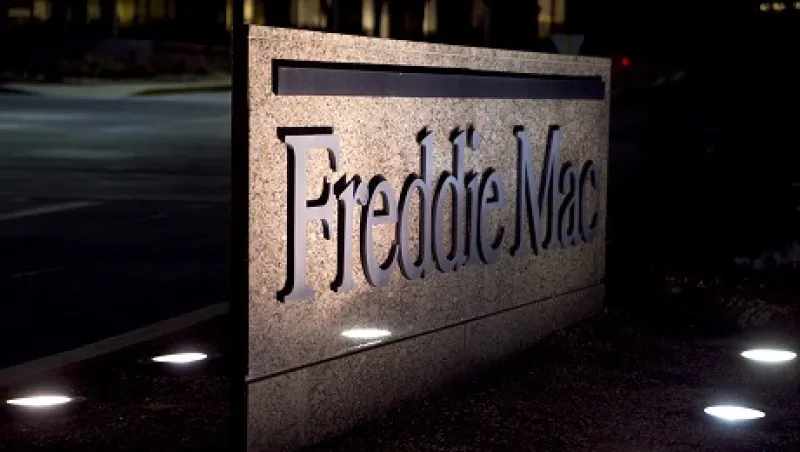Bipartisan efforts in Washington have been rare of late. Yet there is emerging agreement across the aisle in Congress to wind down Fannie Mae and Freddie Mac and create a new mortgage finance system with a smaller government role. Even President Barack Obama joined the chorus on August 6 in Phoenix when he called for winding down the two government-sponsored enterprises and replacing them with a new system backstopped by federal insurance but where “private lending should be the backbone.”
Both houses of Congress have introduced new mortgage legislation this summer. In the Senate Tennessee Republican Bob Corker and Virginia Democrat Mark Warner are co-sponsoring the Housing Finance Reform and Taxpayer Protection Act. In the House of Representatives, Texas Republican and Financial Services Committee chairman Jeb Hensarling brought forward the Protecting American Taxpayers and Homeowners Act.
A London consultant on financial regulation, however, offers a few words of advice to Congress as it crafts the new legislation. “America, beware of recreating the failures of Fannie Mae and Freddie Mac,” says Oonagh McDonald, a former member of Parliament and director at the U.K.’s Financial Services Authority.
McDonald published her 496-page history and analysis of the GSEs — Fannie Mae and Freddie Mac: Turning the American Dream into a Nightmare — last year. The book finds that since the early 1990s Fannie Mae and Freddie Mac led the mortgage industry in relaxing prudential underwriting standards while concealing the extent to which they encouraged subprime lending.
But the lessons from the failure of prudential underwriting at the two agencies may have already been forgotten, McDonald warns. She worries that federal regulators will create space in their new rules to allow a repeat of much of what was done wrong in the past. She also worries that proposed legislation would recreate the same moral hazards that nearly brought down the mortgage industry five years ago.
For example, McDonald says, the Consumer Financial Protection agency continues to operate under the mistaken view that subprime lending is defined almost entirely by the level of interest rates paid by borrowers. However, she adds, it would be more accurate to define subprime lending by such things as the borrower’s credit score, ability to repay and size of the down payment. A prime loan is one with at least a 660 credit score and a 20 percent down payment; anything less is subprime, according to McDonald.
Financial regulators setting up rules required under the Dodd–Frank Wall Street Reform and Consumer Protection Act first leaned toward requiring a 20 percent down payment for standard mortgages. However, McDonald is worried that regulators have gone wobbly and will bless rules that may allow for very high loan-to-value lending, perhaps as high as 100 percent.
McDonald finds troubling some of the provisions of proposals gaining support in Washington that call for a federal government role as a reinsurer of mortgage-backed securities. Such proposals have considerable support in Congress and within the Obama administration.
In the Corker-Warner bill the newly created Federal Mortgage Insurance Corp. — which would have the explicit backing of the good faith and credit of the U.S. government — would be funded by premiums paid by private sector issuers of securities. Its role is patterned after that of the Federal Deposit Insurance Corp. To avoid an outcome in which the government would again have to bail out investors, financial firms that issue securities backed by a pool of mortgages would be required to have a 10 percent capital buffer for each issuance of mortgage-backed securities. The buffer would enable the payment of principal and interest to purchasers of the securities in spite of losses from defaults of mortgages in the pool backing the securities. Senator Corker contends that the buffer will be more than sufficient to cover losses in a repeat of the recent crisis since it’s “twice the size of the losses that hit Fannie and Freddie.”
McDonald worries that over time, the presence of the government as a reinsurer might produce the same gradual weakening of lending standards that occurred under Fannie and Freddie. The success of the new system would depend on whetherloans are consistently underwritten in a prudential manner and whetherthe federal mortgage insurer has set aside sufficient reserves to deal with a housing crisis.
One need look no farther than the Mutual Mortgage Insurance Fund at the Federal Housing Administration to see how federal mortgage insurance can fail, McDonald points out. The MMI Fund was set up by Congress to maintain a 2 percent reserve or buffer to cover losses on guarantees of FHA loans. The agency guarantees 100 percent of loans it backs, and the program is paid for by premiums tacked onto loans or paid up front. That entire 2 percent reserve in the fund is nowexhausted, and the FHA is facing a taxpayer bailout.
Worries about the moral hazard that might accompany a new federal role as mortgage insurer prompted Rep. Hensarling to call for a completely private system for securitizing mortgages in the future after the wind-down of Fannie Mae and Freddie Mac. In his proposed legislation there would be no government guarantee of privately issued mortgage-backed securities.
McDonald hopes that in all the debate legislators do not lose sight of the need for prudential oversight of lending standards and the potential corrosive effect of government guarantees on underwriting standards. This, she acknowledges, will mean fewer borrowers can qualify for mortgages, but she sees this as necessary for a sound mortgage system.






